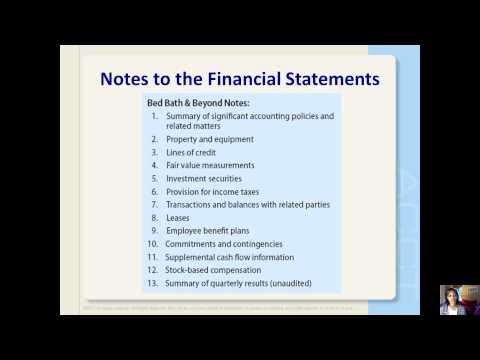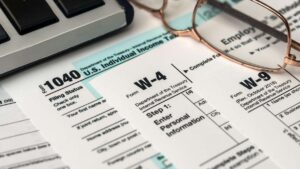Content
- How Do You Calculate an Allowance for Doubtful Accounts?
- Stay up to date on the latest accounting tips and training
- Why Small Business Owners Should Always Estimate an Allowance for Doubtful Accounts (ADA)
- What is the industry average allowance for doubtful accounts?
- Accounts Receivable Aging Method
- What Is an Allowance for Doubtful Accounts?

The complete, concise guide to winning business case results in the shortest possible time. For twenty years, the proven standard in business, government, education, health care, non-profits. In the next year, part of the Allowance for Doubtful Accounts was collected in the amount of $3,500. In the Balance Sheet, for companies to be able to show a conservative amount of their Accounts Receivable balances, the Allowance for Doubtful Accounts is established. Because of the recognition of the Allowance for Doubtful Accounts, the Income Statement and Balance Sheet reports will not be overstated. The Ascent is a Motley Fool service that rates and reviews essential products for your everyday money matters. For more ways to add value to your company, download your free A/R Checklist to see how simple changes in your A/R process can free up a significant amount of cash.
The wholesale trade sector also Allowance for Doubtful Accountss on-time payments for the most part, with some exceptions like medical product distribution. Construction is notorious for lengthy credit cycles, and collection cycle data reflects this reality. When collecting an invoice seems unlikely, AFDA is credited, and bad debt expense debited.
How Do You Calculate an Allowance for Doubtful Accounts?
An AR automation platform with intelligent collections capabilities can help you stay on top of your collections so that overdue invoices don’t go past the point of no return. Net realizable value is the value of an asset that can be realized upon its sale, minus a reasonable estimation of the costs involved in selling it.
Sanden : Notice Concerning the difference between the Consolidated Earnings Forecast and the actual results and the recognition of Extraordinary Incomes and Losses – Marketscreener.com
Sanden : Notice Concerning the difference between the Consolidated Earnings Forecast and the actual results and the recognition of Extraordinary Incomes and Losses.
Posted: Tue, 14 Feb 2023 07:20:10 GMT [source]
In the percentage-of-receivables method, the company may use either an overall rate or a different rate for each age category of receivables. To illustrate, let’s continue to use Billie’s Watercraft Warehouse as the example. BWW estimates that 5% of its overall credit sales will result in bad debt. It protects your capital, maintains your cash flows, and—most importantly—secures your earnings against defaults. When compared to self-insurnace, TCI provides you with a safer, more strategic accounts receivable management option.
Stay up to date on the latest accounting tips and training
https://personal-accounting.org/es can then identify the most important and high-risk accounts and get an approximate idea of which customers might default. For the smaller accounts, the business then uses the historical percentage method. The Pareto analysis method is generally used by companies that have only a few large accounts. Businesses that offer trade credit to their customers keep an allowance for doubtful accounts on their balance sheet. It is an estimate of the amount of accounts receivable that a business expects to become bad debt. When customers don’t pay you, your bad debts expenses account increases.
- Being proactive with your e-invoicing and collections process is the easiest way to reduce the number of doubtful or delinquent accounts.
- The company can recover the account by reversing the entry above to reinstate the accounts receivable balance and the corresponding allowance for doubtful account balance.
- When it comes to your small business, you don’t want to be in the dark.
- Allowance for doubtful accounts is a financial metric that estimates the value of rendered services or goods sold that you don’t expect to get paid for.
- Continuing our examination of the balance sheet method, assume that BWW’s end-of-year accounts receivable balance totaled $324,850.
- The accounts receivable aging method is a report that lists unpaid customer invoices by date ranges and applies a rate of default to each date range.
Let’s consider a situation where BWW had a $20,000 debit balance from the previous period. First, explaining how accountants use the contra-asset account “Allowance for Doubtful accounts” to maintain accounting accuracy by writing off bad debts. The examples below further explain how a company writes off bad debt and how these accounts impact each other. The discussion also examines the impact of writing off bad debts on the Income statement, Balance sheet, and statement of changes in financial position. On the balance sheet, the 14k is listed in assets as a deduction, directly below the accounts receivable figure.
Why Small Business Owners Should Always Estimate an Allowance for Doubtful Accounts (ADA)
The $1,000,000 will be reported on the balance sheet as accounts receivable. The purpose of the allowance for doubtful accounts is to estimate how many customers out of the 100 will not pay the full amount they owe. Rather than waiting to see exactly how payments work out, the company will debit a bad debt expense and credit allowance for doubtful accounts. The allowance for doubtful accounts is a general ledger account that is used to estimate the amount of accounts receivable that will not be collected. A company uses this account to record how many accounts receivable it thinks will be lost. In accrual-basis accounting, recording the allowance for doubtful accounts at the same time as the sale improves the accuracy of financial reports. The projected bad debt expense is properly matched against the related sale, thereby providing a more accurate view of revenue and expenses for a specific period of time.

The balance sheet method is another simple method for calculating bad debt, but it too does not consider how long a debt has been outstanding and the role that plays in debt recovery. Allowance for uncollectible accounts is a contra asset account on the balance sheet representing accounts receivable the company does not expect to collect. When customers buy products on credit and then don’t pay their bills, the selling company must write-off the unpaid bill as uncollectible. Allowance for uncollectible accounts is also referred to as allowance for doubtful accounts, and may be expensed as bad debt expense or uncollectible accounts expense. The allowance method is considered a less aggressive and, in some industries, more acceptable method for writing off debt. It relies on the premise that the amount of bad debt can be accurately estimated based on historical accounting data. A transaction and its related bad debt expense are then recorded in the same time period, making the financial statements a more accurate record of transaction profitability.
Recording the above journal entry will offset your current accounts receivable balance by $3,000. For example, if your current accounts receivable balance is $8,000, the actual value of the account would be $5,000. Last year, 10% of your accounts receivable balance ended up as bad debt. Since then, you’ve improved customer screening and instituted better collection procedures. It adds a significant delay between recognizing revenue from a transaction and identifying all expenses connected with that same transaction.
